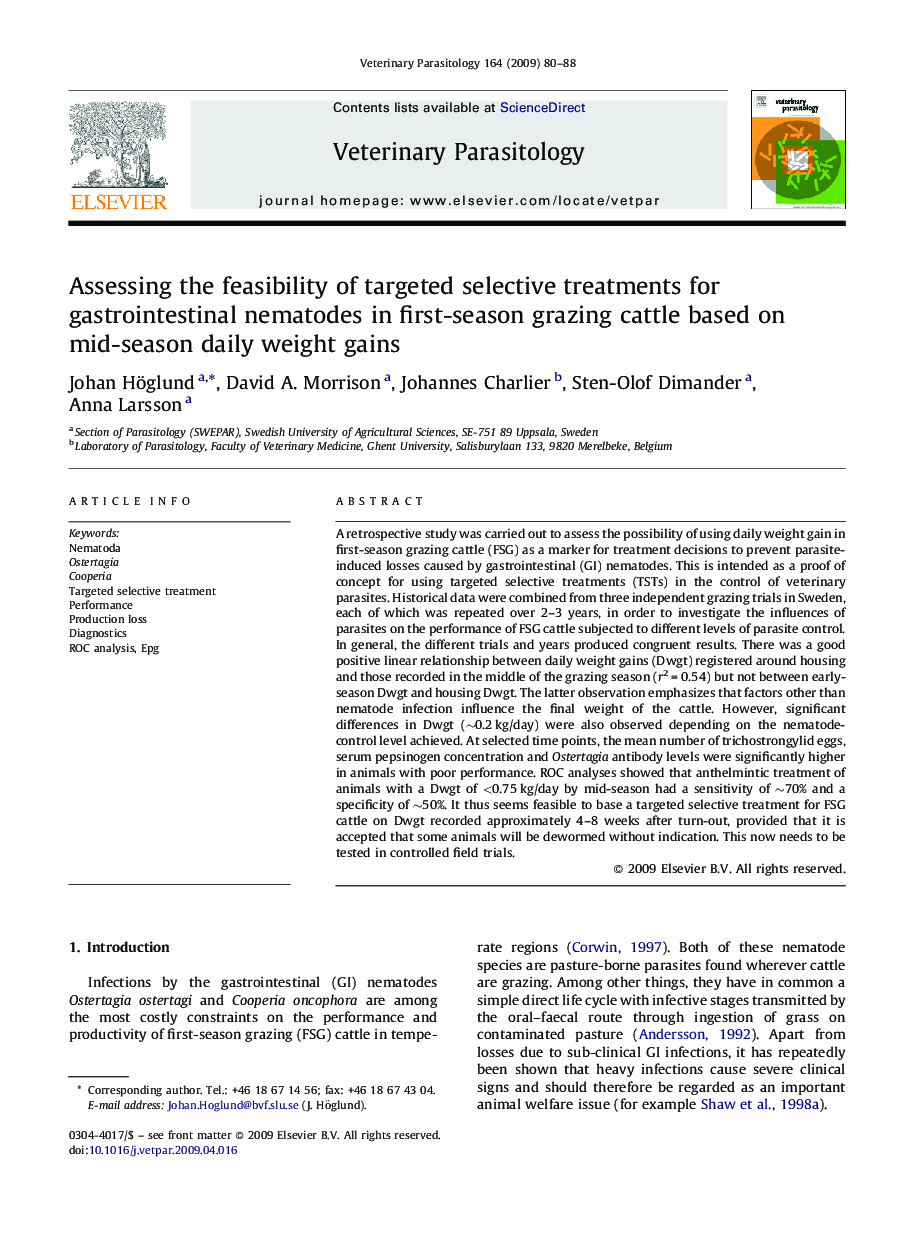| کد مقاله | کد نشریه | سال انتشار | مقاله انگلیسی | نسخه تمام متن |
|---|---|---|---|---|
| 2471181 | 1112523 | 2009 | 9 صفحه PDF | دانلود رایگان |

A retrospective study was carried out to assess the possibility of using daily weight gain in first-season grazing cattle (FSG) as a marker for treatment decisions to prevent parasite-induced losses caused by gastrointestinal (GI) nematodes. This is intended as a proof of concept for using targeted selective treatments (TSTs) in the control of veterinary parasites. Historical data were combined from three independent grazing trials in Sweden, each of which was repeated over 2–3 years, in order to investigate the influences of parasites on the performance of FSG cattle subjected to different levels of parasite control. In general, the different trials and years produced congruent results. There was a good positive linear relationship between daily weight gains (Dwgt) registered around housing and those recorded in the middle of the grazing season (r2 = 0.54) but not between early-season Dwgt and housing Dwgt. The latter observation emphasizes that factors other than nematode infection influence the final weight of the cattle. However, significant differences in Dwgt (∼0.2 kg/day) were also observed depending on the nematode-control level achieved. At selected time points, the mean number of trichostrongylid eggs, serum pepsinogen concentration and Ostertagia antibody levels were significantly higher in animals with poor performance. ROC analyses showed that anthelmintic treatment of animals with a Dwgt of <0.75 kg/day by mid-season had a sensitivity of ∼70% and a specificity of ∼50%. It thus seems feasible to base a targeted selective treatment for FSG cattle on Dwgt recorded approximately 4–8 weeks after turn-out, provided that it is accepted that some animals will be dewormed without indication. This now needs to be tested in controlled field trials.
Journal: Veterinary Parasitology - Volume 164, Issue 1, 16 September 2009, Pages 80–88